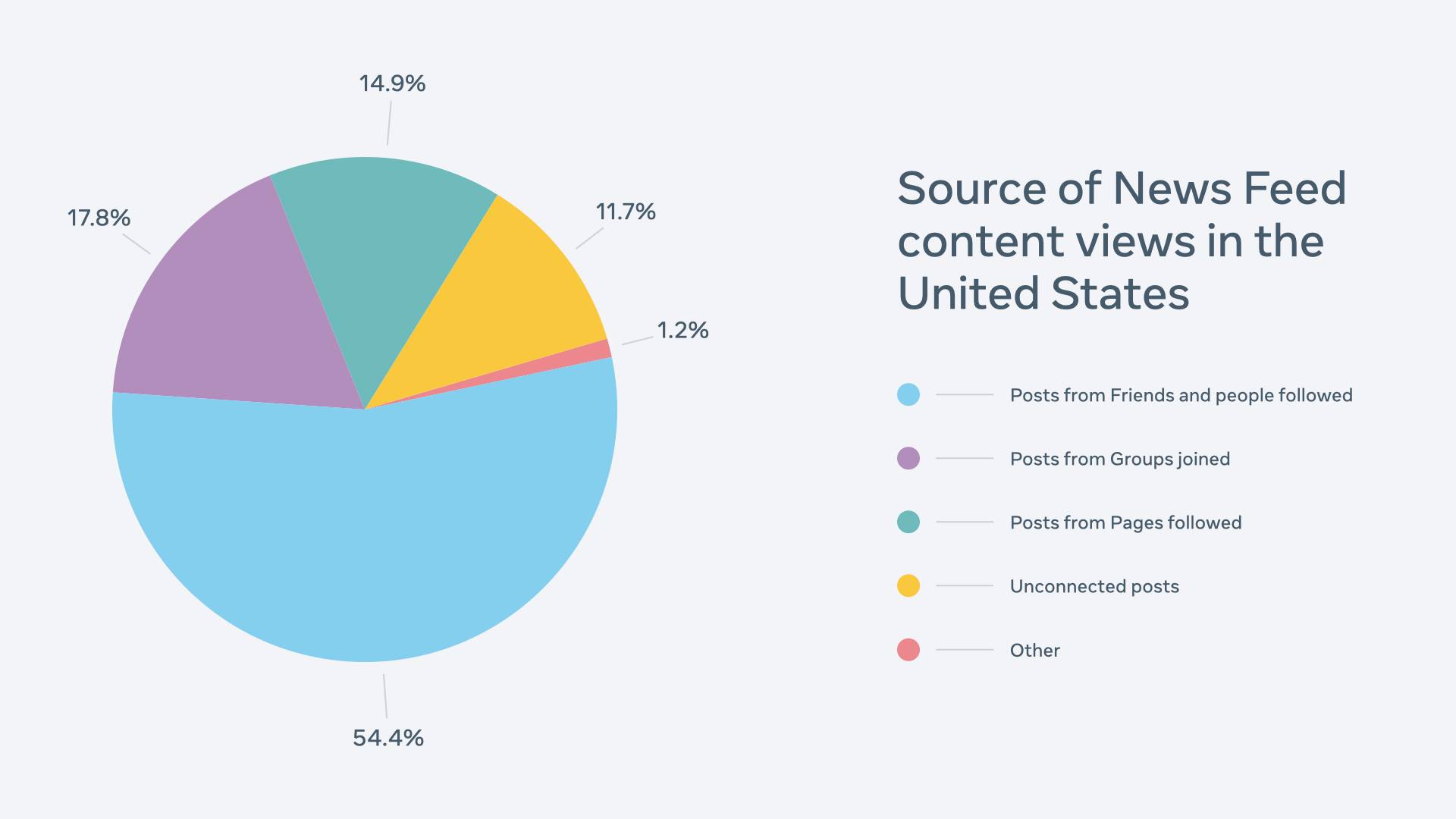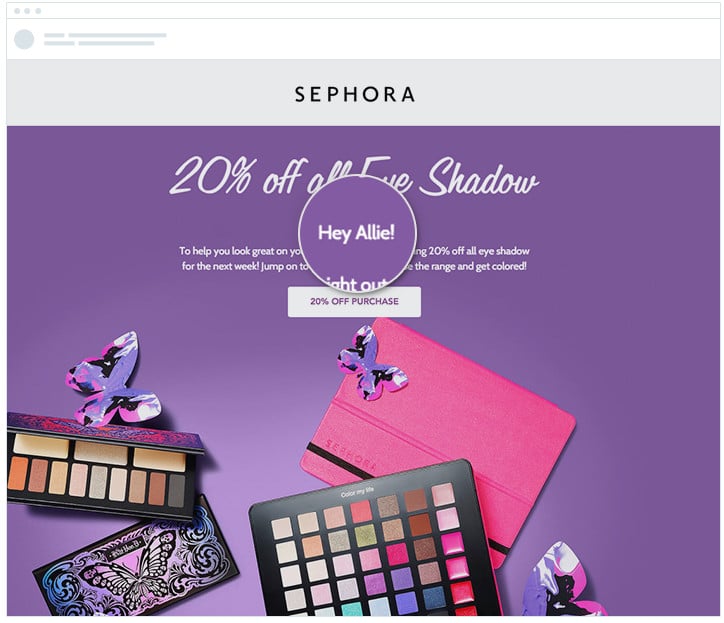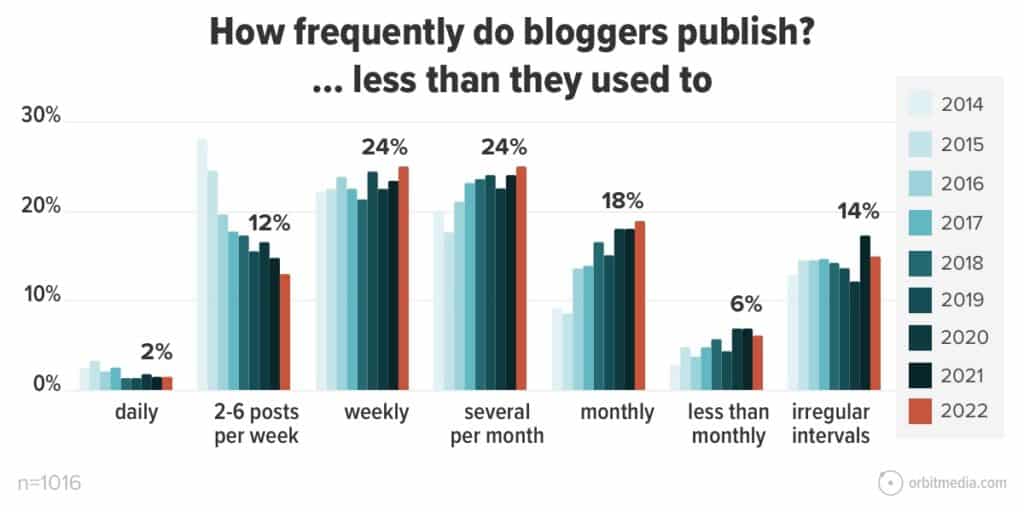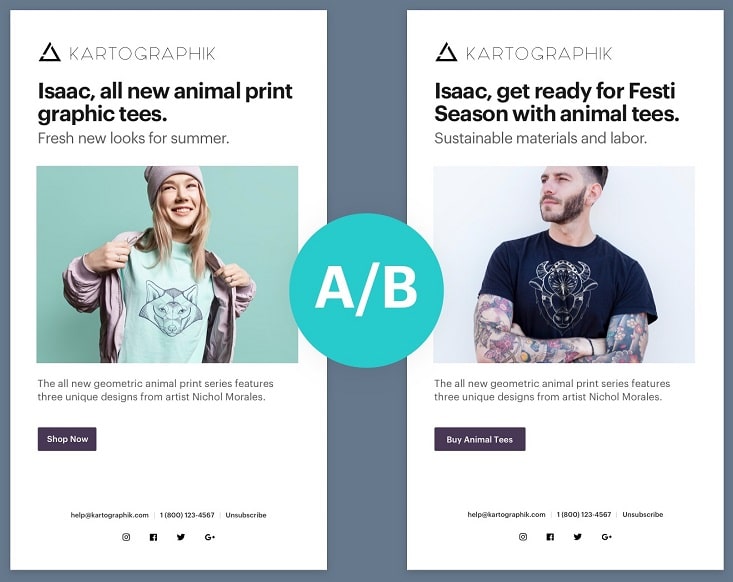
The Biggest Content Marketing Mistakes You Keep Making
Careless content marketing mistakes are costing businesses more than their monthly budget.
Blindly navigating your marketing strategy can cause your content to capsize. If you simply dive in and start randomly publishing blog posts, you’re unlikely to see any real results from your efforts.
An ineffective strategy will both pause a business’s growth and decrease their probability of sales by 40%. This doesn’t mean that content marketing doesn’t work – just that you’re doing it wrong.
In this post, we discuss some of the most common mistakes businesses make in content marketing. If your content ship is sinking, it’s not too late to anchor into new strategies. By understanding what not to do and keeping an eye on current content marketing trends, you can turn your mistakes into mastery.
1. Not Basing Your Content Strategy on Data
Relying on intuitive instinct to define your content marketing strategy is a great way to waste time and money.
Knowing your business is a key part of driving traffic to your site. But you need to choose data over guesswork every time.
Instead of channeling your higher self, evaluate competitor success. Use the highest ranking articles to determine which are driving the most ROI and accurately addressing SEO (more on that later, wink-wink). Then, ask yourself the following questions:
- How long are these posts?
- Is there value in recreating this content?
- Is there key information missing from this article?
- How many external links and backlinks are included?
Your answers will help determine which articles your team can improve. Pencil those babies into your content marketing calendar and voilà! You now have a list of content topics backed by data instead of divination.
2. Not Speaking To Your Target Audience
No matter how consistent your content is, it’s going to flop if your readers can’t relate.
Start each post with identifying your target audience and determine what needs to be included for readers to find value. When you share valuable content that educates and entertains, your audience will trust that you’ve got more where that came from.
When your audience feels seen, they’re also likely to repost your content throughout their personal networks. More than 50% of content in social media news feeds comes directly from peers. It’s likely that you’ll reap the benefits of a visibility boost and even gain more loyal readers.

Image Source: Sprout Social
3. Writing for Search Engines, Not Humans
Keyword research is one of the key components of a successful marketing strategy, but keywords are just a small part of the puzzle. By all means, do your research and know what keywords you’re targeting but don’t try to shoehorn them in.
Forcing in too many or using unnaturally phrased keywords that stand out from a mile away will create a poor user experience. This can also lead to an “over optimization” penalty from Google if they deem your content to be keyword-stuffed.
Instead, writing quality content should be your number one aim. Keywords are a lower priority. Search engine algorithms are sophisticated these days – they know that someone searching for “San Francisco car repairs” has the same intent as someone searching for “car repairs in San Francisco”. There’s no need to force in multiple variations of the same search term.
If you aim to make your content thorough (both in terms of length and depth), the appropriate keywords will find their way in naturally.
4. Not Building a Business Case Upfront
Content marketing ROI starts with a strong business case. Think about what you are trying to achieve. Are you trying to create affinity for your brand’s products? Are you trying to generate quality leads? Are you trying to engage new buyers with your brand? All of these things are key elements that must be decided upfront as the foundation of your content marketing efforts. Without this, your program will struggle to prove its value and ROI.
5. Not Documenting Your Content Marketing Strategy
After awhile we start to sound like a broken record about this, but its importance cannot be emphasized enough. A 1979 Harvard MBA study asked students, “Have you set clear, written goals for your future and made plans to accomplish them?” The result, only 3% had written their goals and plans, 13% had ideas of goals, but did not have them in writing and 84% had no goals in their heads or on paper.
Ten years later, the same group was interviewed again. The 13% of the class who had goals, but had not written them down was earning double the amount of the 84% who had no goals. The 3%, however, who had written goals were earning ten times as much as the other 97% of the class combined. The same principles apply to content marketing strategy. If you write down your content marketing goals and plans to achieve them, you are more likely to do so – in fact, 5x more likely, according to Content Marketing Institute.
6. Focusing Too Much on Sales, Not on Providing Value
Consumers have become incredibly efficient at filtering out promotional content. If you’ve created a piece of content with the sole aim of making sales, it will not only be obvious, but it’s also unlikely to have the intended effect. People can sniff out a sales pitch a mile away.
Good content marketers know they can’t dupe their audiences, and don’t try to do so. Remember, content marketing is not copywriting and you shouldn’t treat it as such. Instead of thinking about what you can get out of each piece of content, focus instead on how it can help your customers.
Consumers today want content that educates or entertains them. Shameless promotional plugs turn them off. If you provide compelling content, they’ll be more likely to engage with your content — and share with their networks, too.
Don’t make your content all about you. If your industry or niche is intrinsically uninspiring, it’s easier to fall into this trap. By providing the best possible value to your customers through helpful and interesting content, you’ll gain their trust and respect, which will ultimately lead to more sales further down the line.
7. Ignoring Your Customers’ Questions (And Needs)
The basic principle of content marketing is to simply answer your customers’ questions. If you’re not doing that, you’re not doing content marketing properly. Sometimes we see brands struggle with understanding what their customers want from them. For example, a health insurance company may think providing healthy recipes would be something their audience would find of interest. Sure it’s possible, but more likely that not many people are looking for their next summer salad recipe from their insurance company. The type of questions they’d be asking their insurance company would be more along the lines of, “How do I choose between an HMO or PPO plan?” or “I’m getting married in a few months, how should my insurance change?”
Shopkeep, a point of sale system for small businesses, finds its blog content topics by going straight to the source. Paul Nugent, Shopkeep’s Director of Content, explains,
“We interview merchants constantly. We ask them their pain points, area of concern, what they would want in their inbox every week. We’ve learned there are subjects that are more compelling, even within the same industry. For example, layout design is more important for a full service restaurant than a quick service.”
With this strategy, there’s no doubt that what they’re publishing will be tremendously valuable to their customers.
Proper research is vital for your content marketing strategy, not so much to identify keywords, but rather to identify the topics that your customers are looking for.
One mistake that businesses make time and time again when producing blog posts is that they create general content that’s vaguely related to their niche or industry, not specific content aimed at solving problems.
By getting really deep into your research and understanding your customers, you’ll get to know their pain points and therefore the content you can produce to help them overcome their challenges. 80% of consumers believe brands don’t understand them as an individual, resulting in poorly targeted marketing messages.
Let’s say you run an online toy store and want to start publishing a blog to bring in more search traffic. You can write dozens of generic toy reviews and gift idea round-ups. They’ll probably bring in a few hits to your site but you won’t really be providing truly useful and insightful content to your audience.
However, if you realize from your research that lots of parents are searching for how to teach their kids to tie their shoelaces, you’ve identified a problem to solve. You can then write a blog post explaining the importance of fine motor skills development to master skills such as tying shoelaces and include a few links to some toys that can help to build these skills.
You’ve now got a piece of content that is providing real value and generating sales for you at the same time.
8. Skimping on Design, Creatives, Visuals and Graphics
Articles that include visuals receive 94% more views than those without. An effective marketing strategy doesn’t overlook the importance of creative content design.
I just can’t over-emphasize the importance of visual content. Throwing your new white paper into your old template and relying on stock photos may be easy, but will do nothing to help your content stand out. Having a capable designer create custom images that tie directly into the content is going to increase your chances of getting shared, and will get your content seen by more buyers.
Great visual content is key to creating easy-to-read articles that engage your audience. Each post should have at least one image between every 200-300 words to break up text. Similarly, including a video less than 2 minutes long can both boost visual appeal and improve SEO.
A good rule of thumb is that if you don’t want to read it, neither does your audience. Enhance the value of your content by adding a few pictures, videos and engaging text.
9. Not Creating Personalized Experiences
Amazon addresses everyone by first name, but no one feels like Amazon’s best friend. Autofill alone doesn’t turn a generic email into a personalized one. Instead of playing fill-in-the-blank with prospect personalization, use tools to create personalized experiences that get people interested.
“Personalization includes an array of awesome, data-driven techniques that bring in substantial ROI,” according to an article on email marketing brand Campaign Monitor’s blog. “These techniques include making recommendations based on past purchases, using dynamic content to fit consumer preferences, showing an understanding of purchasing history, and taking advantage of data to promote compelling offers.”

Leverage gated content on your landing pages to turn interest into a mailing list sign-up and a potential conversation. If someone clicks through certain pages on your website, track that activity and provide more information on those topics. Follow up on abandoned shopping carts; send occasional reminders about wish list items. Focus more on individuals’ needs to take connections from passing to permanent.
10. Producing Only One Type of Content, on the Same Platform
To many business owners, content marketing means one thing only: a blog. It’s true that blogging can be a very effective and important part of your content marketing plan, but it shouldn’t be the only part.
You need to think about what content formats work best for each of your topics. Some might work best as a blog post while others would be better as a video or infographics. White papers can be great, and many people like them – but others may download and never read them because it simply takes too long or they are not far enough along in the buying cycle to dedicate a whole lot of time to research. Some people love video content, and are more likely to watch a video than read an article – but others complain that they just want to skim some bullets and never engage with video.
The thing about content formats is that everyone has different preferences. B2B buyers act in groups, and if you don’t have a wide array of content offers in different formats you may miss the boat on the one influencer that you need in your corner.
Also, consider how you’re distributing your content – you’re limiting yourself if it’s going no further than your blog. Think about guest blogging for other sites, publishing on social media, and distributing content as ebooks. Don’t forget, your email list is an important channel for your content marketing too.
11. Being Inconsistent or Infrequent in Your Publication Schedule
If you want to get the most out of content marketing, it’s important to stick to a regular schedule of content publishing.
Consistency matters when it comes to growing a dedicated audience. If you’re just publishing blog posts randomly whenever you feel like it, your followers won’t know when to expect new content and will most likely forget about you entirely if you go too long without publishing.
Posting an optimal amount of content can be tricky, especially if it’s your first time dipping your toes in the pool of content marketing.
The key is understanding that more content isn’t helpful if it’s not focused on delivering value. Publishing a little bit of content won’t make a noticeable impact either, even if it’s quality material.
Successful content creation requires coming up with a solid plan and sticking to it. To see increased brand awareness, your businesses should stick to 1 – 2 blog posts per week and between 1,000 – 1,200 words per week.

Image Source: Orbit Media
Planning out content in advance in an editorial calendar means you’ll never be short of material to publish. You can also plan in appropriate seasonal content and tie in promotions you’re running or produce content around other significant dates. This needs to be planned well in advance or you’ll miss the opportunity.
12. Creating Too Much Content
Carlos Hidalgo wrote that “…more and more organizations are increasing their spend on content marketing, but only 30% can demonstrate the ROI from this spend.” It is getting easier to get the budget to create content, but without the proper strategy in place it is very easy to focus on the content that does not serve the buyer.
When product-focused marketers are the only group tasked with creating content, you run the risk of having that content focus on features and benefits rather than the buyer’s needs at every step of the journey. Creating content shouldn’t be an exercise in volume, it should focus on quality and it should be something the buyer wants to read, not that you hope the buyer will read.
13. Not Publishing Enough Content
Not surprisingly, companies that commit to regularly publishing quality content reap the biggest rewards in terms of website traffic and leads. At NewsCred, our team found that increasing our posting cadence from 6 pieces of content weekly (1 original, 5 licensed) to 10 pieces of content weekly (5 original, 5 licensed) increased our unique visitors almost 50%.
Hubspot’s recent research had similar findings in correlation of publishing frequency and generated leads. For the company’s customer base, brands that published 16+ blog posts per month received about 4.5X more leads than companies that published between 0 – 4 monthly posts.
14. Not Including CTAs
This is an easy mistake to make if you’re following some of the previous advice about meeting your customer needs and avoiding being too salesy. That doesn’t mean that you can’t attempt to engage with your audience at all.
If you’ve published a great piece of content and the reader has got to the end of it, what do you want them to do?
If you’ve answered their questions and they’ve got what they needed, they’ll probably click right back off your site. However, if you include a clear CTA that sends them to another page on your site or encourages them to sign up for your email list, you’ll have captured a valuable lead.
CTAs don’t have to be part of your content – you may choose to implement them as a pop-up or bar at the top of your site. Just make sure you don’t overlook them completely.
15. Not Providing Social Proof
“Any positive comments about you, your business, or even your product function as social proof,” says Flora Frichou of brand trust company Trustpilot. “These online sentiments are endorsements that this person, company, service, or product is great, and that the overall customer journey has satisfied previous shoppers.”
People trust other people — even people they’ve never met. Reviews, client testimonials, and case studies can convince prospects that your offerings are the perfect fit for their situation.
Regularly update your social proof to keep pitches fresh and relevant. People will eventually tire of the same two smiling people sharing their love for your brand. But if they see a steady stream of fanatics, they’ll be triggered to find out what’s so great about your business.
16. Not Utilizing Your Existing Resources
According to Sirius Decisions, 60-70%of B2B content goes unused. Think of all the wasted time and energy. Instead of starting from scratch, take a look at your database of what’s already created and see what you can reuse or repurpose. Salesforce has this system nailed down with a planned approach to transform a piece of content into multiple media forms. Salesforce’s content marketing manager, Amanda Nelson explained her team’s system saying,
“We had one eBook called ’30 Ways to Create Your Social Media Plan.’ We wrote 30 blog posts detailing each piece. We create tons and tons of content from this central focus. By producing two eBooks a month, our content engine is constantly running.”
Creating content is expensive and time-consuming, so it is in your best interest to recycle that investment in as many ways as you can.
17. Producing Similar Content for Different Audiences
Personalization is great, but when you have limited information to consider, audience segmentation works almost as well. Instead of sending shotgun-blast emails to every address in your CRM, break audiences into groups to try different messages.
“It’s not enough to change the examples of customers you’ve worked with,” says TJ Macke of sales enablement platform Regie.io. “Change the length, change the focus, try sounding cheeky instead of polished — creating variety will be what gets you to that 10x result.”
You can keep your brand’s voice consistent even as you try different messaging strategies. As long as you don’t stray from your company’s core values and purpose (which you should define, if you haven’t), your customers won’t blink at an email that might seem out of character on the surface.
18. Not Diversifying Your Content Formats
Once upon a time , someone told you that the secret recipe for perfect content marketing calls for boosting your blog posts. Although blogging is an important way to drive traffic, there’s some key ingredients missing from your strategy.
Think about your ROI-driven content topics and determine which formats work best. Consider videos, interviews, social media, case studies and e-books. Add some flavor to your marketing strategy by mixing a variety of avenues into your content.

Image Source: HubSpot
19. Not Creating Enough Content for the Top of the Funnel
This one dovetails nicely with the “too much content” problem. Sometimes creating content isn’t the problem, but your lack of credibility as a trusted advisor and partner is a huge issue. Your papers and brochures may do a fantastic job of describing the benefits of your solutions, but if you have not established that you are a trusted advisor that understands the buyer they may be hesitant to invite you to the table.
Years ago when I was working a short stint in B2B sales, I took a course on SPIN Selling, and I still think about the fundamentals of that selling process today. The “SPIN” in SPIN Selling stands for Situation, Problems, Implications, and Need payoff.
Many companies create plenty of content talking about the payoff, without showing their buyers that they understand their situation, and the problems they face. And most buyers don’t understand the implications of those problems, and the costs of not acting to correct those problems.
If you can create the content that shows that you have insights into the real issues they face on a daily basis, and then help to educate them on the implications of not acting to correct those issues, then you will do a much better job of capturing leads earlier in the buying cycle. You also are positioning yourself as a partner when they are ready to begin the process of change, and that is invaluable.
20. Not Focusing Enough on Distribution
Creating great content isn’t enough to get your site to the top of search results. Hollywood spends about 50% of budgets on production and the other 50% on distribution. Content marketing budgets should be divvied up in a similar fashion. If you’re just getting started, paid distribution is a great way to jumpstart engagement and reach. Social channels like LinkedIn, Twitter and Facebook all have paid distribution offerings. Other vendors, such as Outbrain, have a pay-per-click model, which allows you to only pay for the traffic you actually receive.
NewsCred has found success with targeted social promotion, resulting in correlating increases in reach and social shares. The charts above show that our team correctly targeting the right people resulted in them viewing, engaging with, and sharing our content.
21. Overdosing on Outbound Marketing
Outbound marketing remains one of the most effective prospecting channels, but potential customers are developing even less patience for outdated communications tactics. To make the most of your outbound strategy, avoid common mistakes that send emails into the trash.
Consumers deal with hundreds of ads and messages every day, starting from the moment they pick up their smartphones in the morning. They don’t have time to listen to irrelevant pitches, nor will they notice anything that blends into the background. You can’t just yell louder to be heard — you need to give people what they want.
22. Failing to Focus on Link Building
Contrary to popular belief, linking to websites other than your own will actually drive traffic to your business as opposed to away.
Link building provides your readers with references and enhances credibility. This gives Google the green flag that your content is trustworthy. It also improves SEO and offers added value to readers, all resulting in boosted visibility and your business ranking higher.
If you’re feeling frisky, start mingling with sites that post similar content and start building a relationship. After getting to know each other, you may find they’re the perfect match for embedding links back to each other’s content. We like to call that “love at first site”.
Enjoy the short video below to learn more about the importance of link building.
23. Not Outsourcing to Specialists
Are you sitting down? Because we’re about to drop a bomb on ya.
75% of people never scroll past the first page of search engines. That means you’ll need sharp SEO skills if you haven’t outsourced an expert to help your business rank on Google.
Luckily, there’s plenty of content marketing agencies like ours that help businesses grow by providing perfected SEO and written content to their clients.
Great SEO is key to ranking, reaching and engaging your audience through including highly searched keywords in marketing content. Valuable content that jives with SEO research will land you on the first page. Misuse of keywords will send you to the back of the line.
Equally as important as SEO experts, quality writers are key to generating valuable content. Online editing and creation tools are great for correcting grammatical errors. Only professional writers can consistently produce engaging, human-powered content that appeals to real people.
If you believe that your value proposition is too complex to trust with an outside writer, than you may need to hire an outside source to help you simplify that complicated scenario. Sometimes the thing that you need to kick-start a stalled content strategy is an outsider to help break down a difficult barrier to communications with your buyers. Getting an outsider’s take on what your company brings to the table can be a creative exercise that will pay dividends in the long run.
Don’t miss out on optimized value by relying on overworked internal personnel to do a job that requires a dedicated expert. Kick-starting your content strategy is as simple as leaving it in the hands of an SEO researcher and creative writer.
24. Not Getting A/B Testing Right
Once you find the type of messaging and content that resonates with your audience, don’t overwhelm prospects with similar content or abandon the message altogether. Take the middle road by A/B testing similar content to determine what works best.

“As you optimize your web pages and emails, you might find there are a number of variables you want to test,” says Lindsay Kolowich of HubSpot. “But to evaluate how effective a change is, you’ll want to isolate one ‘independent variable’ and measure its performance — otherwise, you can’t be sure which one was responsible for changes in performance.”
Create one excellent email, then test something relevant to your conversion rate. If you want to improve open rates, for example, you may test two different subject lines. A click-through rate test might change the color, text, or location of your call to action. Whatever you test, segregate your audience randomly to keep your data as reliable as possible.
25. Not Tracking and Measuring Results
If you’re not tracking the traffic that your content marketing brings in, and how it converts, you have no idea of how effective your content is.
Without this information you not only have no idea if your content is actually helping you, but you also don’t know how to improve poor-performing content and produce more of your top-performing content. You’ll have no idea which falls into each group.
Tracking software these days is easy to setup and activate. It provides you with a huge amount of helpful data. Even if you’re not sure what to do with all this data at first, the most important step is to start collecting it – you can always outsource the analysis and resulting action plan to an expert at a later date.
You also need to have clearly defined goals within your content strategy. After all, you’re not just putting out content because it’s fun – it has to work for you and boost your business success too. This may be by bringing more traffic to your site, increasing sales, or just growing your brand awareness.
Once you know what your goals are, you need to identify the metrics that you can track to see if you achieve your goals.

Master Content Marketing Today!
Content marketing mistakes are easy to avoid when you know exactly where they’re hiding.
But very few content marketers hit a home run each time they step up to bat. We’ve all had our fair share of strikeouts. Failures, however, are also learning experiences, especially those made by others. Mistakes provide insight into what to avoid in the future.
As the content marketing space grows overtime, so have the number of trials and errors we’ve found many marketers make. Don’t make the same mistake twice and learn from the most common ones we see brands making in their content marketing efforts.
Drive traffic to your site and publish quality content by checking out our weekly blogging service now.







Awesome Blog !! this gives me entire process of content marketing for that your content must be unique. Many thanks for sharing such post because such mistakes done many of marketers. Keep it Up!!
Great Share
I totally agree with this article’s defined ideas for making video.
It is really helpful to you tube publishers.
Thank you for sharing your great knowledge with us.
Looking forward to your further tips on similar topics Thanks…
Thanks for the feedback!
Thanks, Michael!